Dr. Jasna Plevnik Attends Shenzhen Forum 2018
- Details
Advancing exchanges and cooperation between countries, cities and regions along the Belt and Road
Jasna Plevnik was a panellist at a key panel debate of the Forum on the issues of advancing exchanges and cooperation between countries, cities and regions along the Belt and Road and proposing solutions moderated by Wu Liang, Chairman and CEO of Liaowang Institute, Xinhua News Agency.
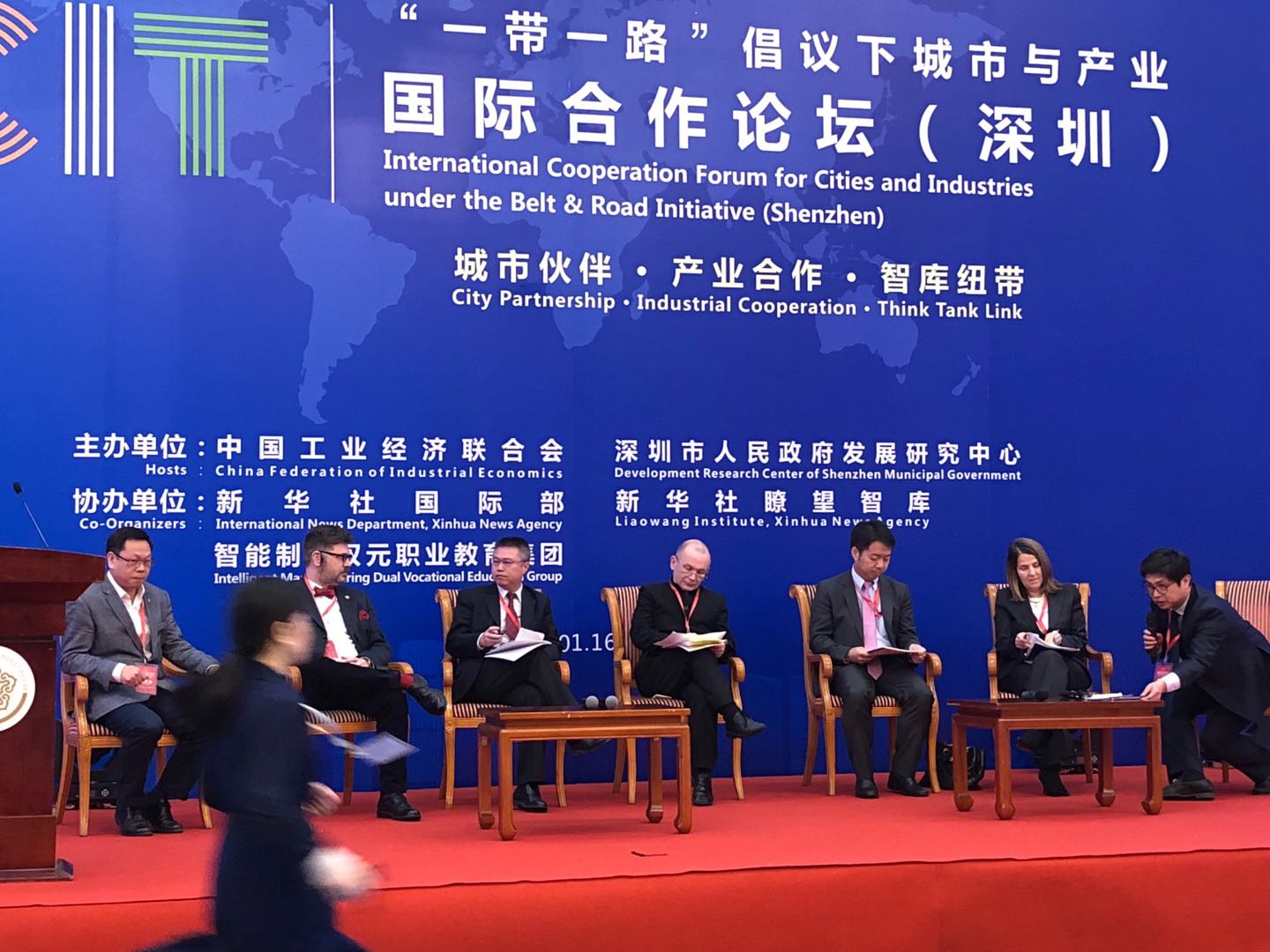
Jasna Plevnik:„The cooperation of big cities have its own way of development but it should not be forgotten that at the same time it shares all key features of the Belt and Road cooperation at regional and country levels."
In her remarks, Jasna Plevnik spoke of the rise of the BRI in South East Europe and its implications for the region's development.
Jasna Plevnik said that orientation on city cooperation along the Belt and Road sea and land corridors stressed a local side of the BRI and created a solid platform for deepening BRI coordination of development policies that has been an essential mechanism for the BRI's projects performance.
„The cooperation of big cities have its own way of development but it should not be forgotten that at the same time it shares all key features of the Belt and Road cooperation at regional and country levels. Therefore, opportunities and challenges for cities and their government under the BRI diplomacy stay similar to those of Belt and Road cooperation among big three regions- said Plevnik
Jasna Plevnik pointed out that many cities in Europe had goals to become hubs for China trade and investments inside Belt and Road Initiative: the French city Marseille has been on the way to become the largest wholesale trade centre in the Mediterranean; Antwerp was very active partner of the Belt & Road project and put great efforts into expanding its market share in China. The port of Antwerp established a taskforce to make Antwerp to play an important role to play in development of the BRI. Serbian-Chinese Industrial Park would be built in Borča, a part of Belgrade, The construction is supposed to start in 2018 and according to the relevant Feasibility Study, it would be a home to 1,000 hi-tech companies that could create several thousand jobs. Belgrade had a good cooperation with Huawei that had set up some ‘Innovation Centers’ in Europe
The panel included other featured speakers Alexandros Modiano, Vice Mayor of Athens, Guo Wanda, and Executive Vice President of China development Institute, Axel Goethals, CEO of European Institute for Asian Studies, Wang Wen, Executive Dean of Chongyang Institute for Financial Studies, Renmin University of China and Chen Jianke, Vice President of Chint Group.
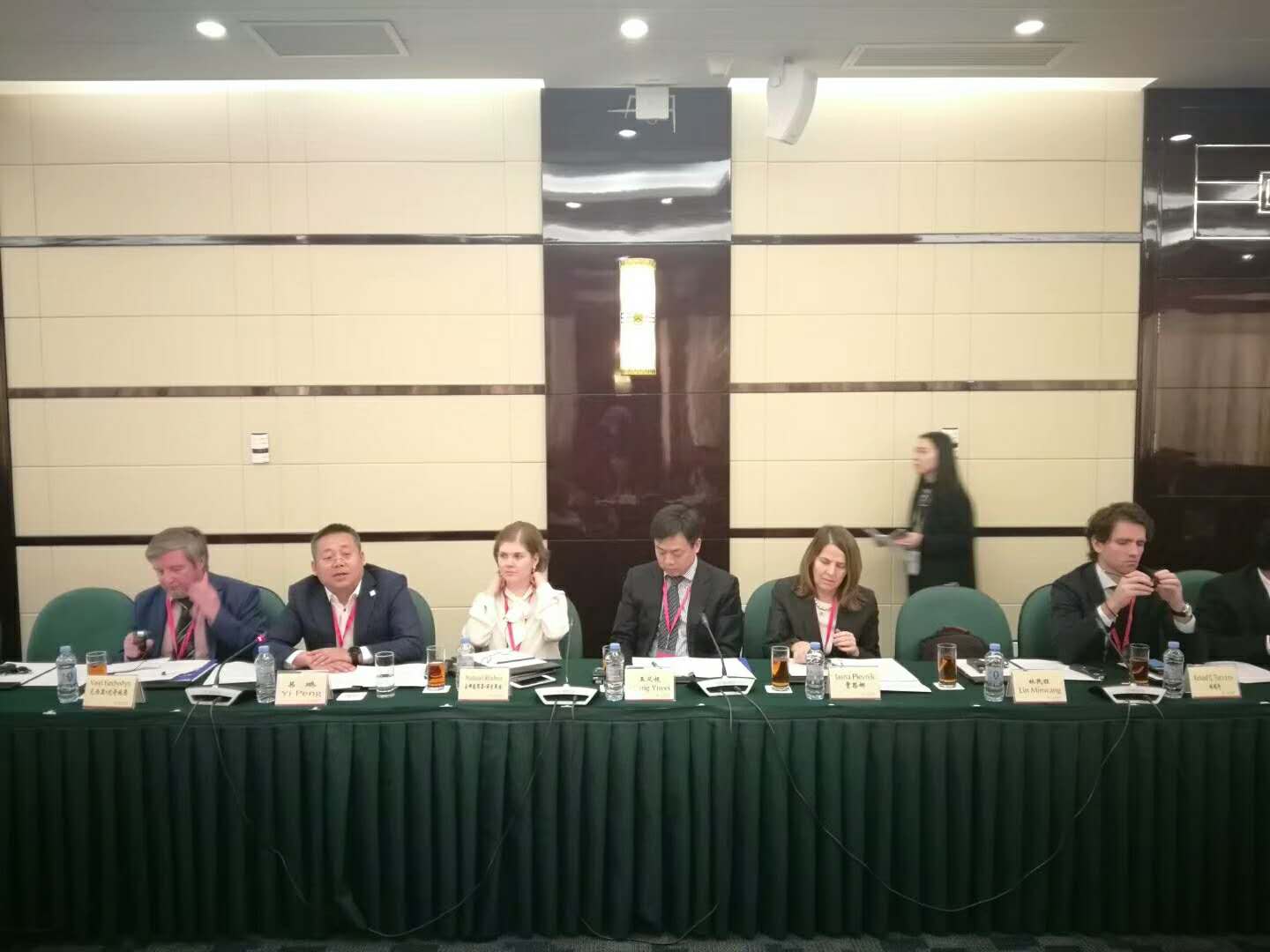
A Sub Forum 1: Think Tank Link was moderated by Wang Yiwei, renowned Professor of School of International Studies, and Renmin University of China. Dr. Jasna Plevnik discussed on think tanks role in sharing the knowledge and facts on the Belt and Road Initiative.
Shenzhen upholds the concept of "open cooperation and win-win future"
Liu Qingsheng, a member of the Shenzhen Municipal Party Committee, and Standing Deputy Mayor announced the initiation of the Forum. He pointed out that Shenzhen is China's first special economic zone and an important window for China's opening up to the outside world.
Liu said that Shenzhen's history was reform and opening up and now it has been prosperous due to reform and opening up. Shenzhen was guided by the socialist ideology with Chinese characteristics and in the new era of Xi Jinping Shenzhen has been focused on more high quality, more effective and more sustainable economic and social development.
"The new starting point of the 40th anniversary of the reform and opening up, Shenzhen would uphold the concept of "open cooperation and win-win future", further strengthen cooperation and exchange in economy and trade, science and technology, and culture along other countries and regions and work together to promote "One Belt, One Road" steady construction line and stability, to achieve common development,"Liu said.
The cities in the region to redefine their own functions and development goals
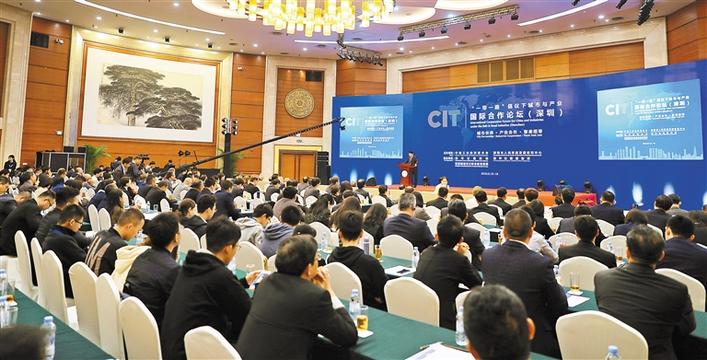
The Opening:300 political, academic, think-tank and business guests from 23 countries attended the Forum
Lu Yaohua, Executive Vice Chairman of China Federation of Industrial Economics said that cities and industries were two important carriers for promoting "One Belt, One Road" construction. –
"On the one hand, the "One Belt and One Road Initiative" has provided a golden opportunity for the cities in the region to redefine their own functions and development goals. Under the new pattern of openness, some key elements of the node and hub cities will face new changes and remodelling of the industrial system. We should tap each other's comparative advantages, strengthen inter-city cooperation, explore new economic growth points and strive to create new opportunities for development in the process of globalization.–"said Lu.
Other featured speakers at the Opening Plenary Forum, that was moderated by Xiong Meng, Executive Vice Director and Secretary-general of China Federation of Industrial Economics, included Zhang Boli, Academician of Chinese Academy of Engineering, Dean of China Academy of Chinese Medical Sciences, President of Tianjin University of Traditional Chinese Medicine, Sun Weijia, Director of the Second Service Department, Counsellor’s Office of the State Council of the People's Republic of China, Zhang Aijun, Deputy Secretary- general of the People's Government of Guangdong Province; Director of the development Research Center of the People's Government of Guangdong Province.
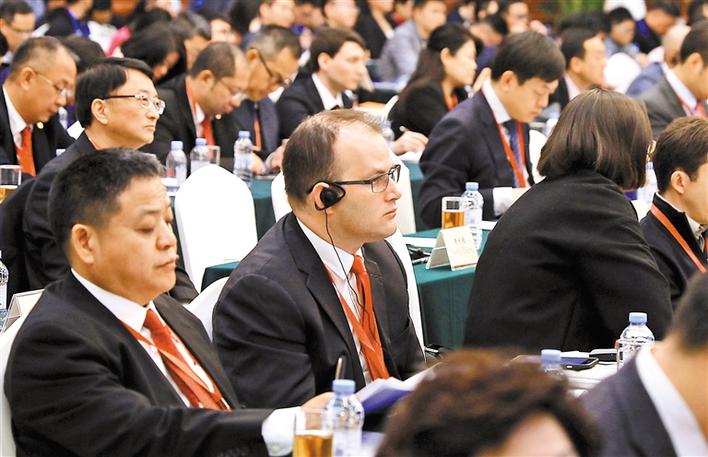
The main topic of this year's Forum:the future of urban partnership along the Belt and Road
Guangdong, Hong Kong, Macao and Taiwan Bay Area is an important base for the Maritime Silk Road
The Plenary Session, navigated by Zhu Huayou, Deputy Secretary- general of Hainan Municipal Government, Director of the province's Research Office, was concentrated around the topic how to build a new platform for international cooperation, to advance policy dialogues between think tanks and establish a structurally new kind of city partnership along the Belt and Road.
Li Yizhong, Vice Chairman of the Economic Committee and standing member of the 12th CPPCC National Committee and vice chairman of the Economic Commission, president of the China Federation of Industrial Economics and former minister of the Ministry of Industry and Information Technology (2008-2010) pointed out that Guangdong, Hong Kong, The Bay Area is an important base for the Maritime Silk Road. The Pearl River Delta has a unique industrial advantage in the Guangdong, Hong Kong, Macao and Taiwan regions. As an important city in the Pearl River Delta, Shenzhen should give full play to its advantages, avoid weaknesses, appropriately increase its investment, adjust its structure, speed up the construction of a strong international manufacturing city and make greater contributions to the construction of the Bay Area and the Belt and Road Initiative
Li Yizhong also summarized the role played by industry and manufacturing industries in "One Belt and One Road" from five aspects. First, transport, telecommunications, pipe network infrastructure connectivity. Second, invest in industrial projects and promote industrial cooperation. Third, project contracting and labour cooperation. Fourth, manufacturing provides strong support for foreign trade. Fifth, mutual benefit and win-win cooperation in resources. Our country pays attention to long-term resources cooperation and insists on mutually beneficial win-win situations and drives the economic development of the countries along the "Belt and Road".”
Learn from all kinds of civilizations and cultures and achieve cooperation and win-win results
Li Zhaoxing, President of China Public Diplomacy Association and former Minister of Foreign Affairs in his addressing said: "Unity is strength and the development of the Belt and Road is not just an exchange on the economic level but also an exchange of culture and other aspects. We should draw on various civilizations and cultures to achieve cooperation and win-win results.”
Li Zhaoxing also shared his practical experiences with more than half a century of diplomatic and foreign affairs work. He believed that the vast number of young friends should cherish feelings of gratitude for the motherland, always adhere to the people-centered thinking, always listen to the party's words and actively join the “Belt and Road ".
The AIIB will further support national infrastructure construction along the "Belt and Road"
Jin Liqun, Asia Infrastructure Investment Bank President and former Vice Minister of Finance pointed out that while the AIIB is a different initiative of the Belt and Road Initiative Mission, but the two were interrelated with each other to jointly promote the economic development of different countries. "The Asian Development Bank will further support national infrastructure construction along the Belt and Road."
Jin Liqun introduced that in just two years, the AIIB completed negotiations with 57 countries and reached consensus on the adoption of major policy documents. “In the process of preparation, China, in the spirit of democratic consultation, unite with many countries in Asia and other regions and is widely recognized by all countries. In the past two years, the AIIB has participated in many projects, which cover many infrastructure projects. In 2018 and in the future, the AIIB will further cooperate with governments and agencies in various countries and commit itself to investing in sustainable development projects to achieve win-win situations and create a better future for humankind all over the world. At the same time, he said that the AIIB also looks forward to closer cooperation with Shenzhen”, said President Jin.
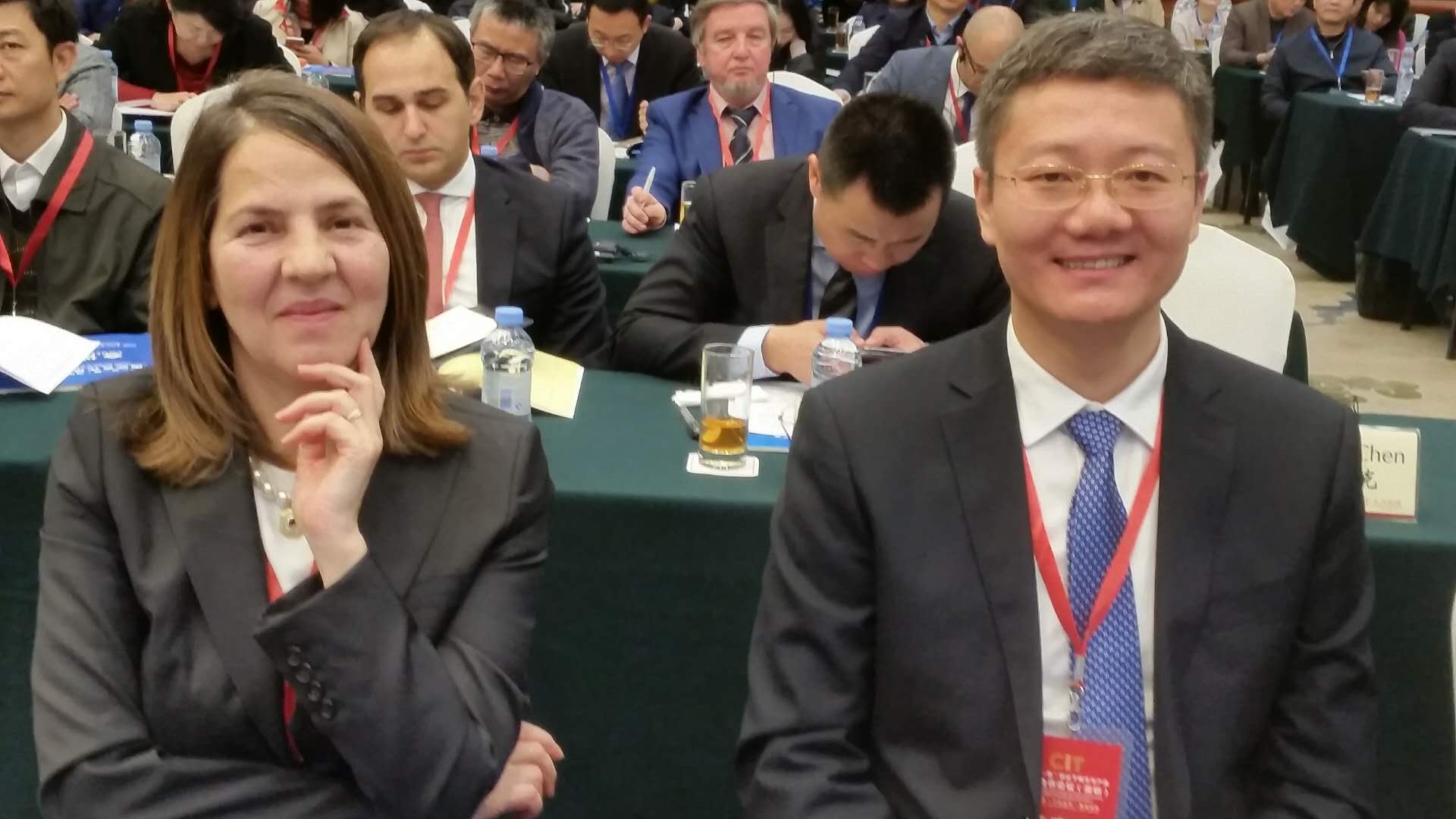
GEOFO President Jasna Plevnik attended the prestigious annual Forum the international cooperation of cities and industries under the "Belt and Road" initiative jointly sponsored by Shenzhen Municipal Government Development Research Center and China Federation of Industrial Economics.
Key implementation directions for "Belt and Road" are in Central Asia and Southeast Asia
Yu Hongjun , Deputy Director of Chinese People's Association for Peace and Disarmament, former Vice Minister of the International Liaison Department of the CPC Central Committee stressed:”
East Asia and Southeast Asian countries have hundreds of millions of people and have huge potential for economic development. They are both willing to cooperate with each other and have achieved remarkable results in cooperation. This is the most dynamic region in the world today.” Yu Hongjun also said that to promote "One Belt, One road" construction, the three key principles should be focused on: building business together, building people-to-people communication together and sharing. "We cannot rush to success; we cannot do everything at one stroke. We cannot be hard-pressed to strive for progress. We cannot seek meritorious service because of our good intentions, regardless of the feelings of our partners and regardless of their interests and aspirations.”
Innovation promotes exchanges and cooperation among nations
Dusan Bella, Ambassador Extraordinary and Plenipotentiary, Embassy of the Slovak Republic to China said:” The Slovak Republic hopes to have more innovation and cooperation with China in the field of hi-tech innovation and hopes that there will be more cooperation in science and technology transfer in the future. He said the Belt and Road Initiative has made a very significant contribution to the economic development of the country along the Silk Road.
The "Belt and Road Initiative" is a new realm of China's opening to the outside world
Wang Jingsheng, Consultant of the State Council of The People’s Republic of China said: "Belt and Road" is a new realm of China's opening up to the outside world. "Belt and Road" is an oath of China on the road to peace and it is a step toward strengthening of China’s global responsibility for liberalization and free trade in this process of building a community of human destinies.
Wang believes China's opening up has entered a new phase bringing three changes: an all-round open transition, a transition from a shortage economy to a spill over economy, and a shift from a globalized participator to an active promoter.
According to him, though “the Belt and Road," is a new pattern of China's opening to the outside world, it is rooted in the soil of history. Its focus is on the Asia-Europe non-mainland and on the coastal islands. At the same time, it is open to all those countries and regions that are willing to join. Secondly, the "Belt and Road" has an extensive content covering not only the economic fields of trade, investment and transportation, but also political, social and cultural aspects. Thirdly, the common interests of "Belt and Road" are enormous and the pursuit of a blossoming Italy is not a trivial one. Finally, the "One Belt and One Road" broadens its horizons by attaching importance not only to opening up the traditional trade channel of Eurasia, but also to strengthening investments.
Guangdong starting point and important node for the "Belt and Road"
Li Huiwu, deputy Director of Development Research Center of Guangdong Provincial People's Government and visiting professor of GDUFS proposed that Guangdong be the starting point and an important node of the "Belt and Road". Since the reform and opening up, Guangdong has made full use of its geographical position, History, humanities and policies and quickly established close economic, trade relations with all countries in the world, and achieved a quantum leap in economic output.
According to Li Huiwu, Guangdong is the country's number one economic and economic province for 29 consecutive years. In recent years, Guangdong has responded positively to the national call and actively participated in the "Belt and Road Initiative." In June 2015, "Guangdong Province participated in the construction of the “Belt and Road Initiative”, proposed that Guangdong should be built into an important engine, economic, and trade cooperation center and logistics hub for the “Belt and Road” cooperation
Cities are the hub of global economic activities
Wu Sikang, Director of the Shenzhen Municipal Government's Development Research Center, said: “Cities are the hub of global economic activities of the "One Belt, One Road" implementation. Director Wu analysed the importance of cooperation between cities, industries and think tanks in building the "Belt and Road" and shared the practice of building the "One Belt and One Road" service in Shenzhen.
“The state has established a framework for cooperation and cities should play a pivotal and carrier role. Most of the cities along the route are still in developing countries. Countries along the BRI’s routes vary greatly in their economic strength, religions, cultures, languages, laws and customs. It requires in-depth study by think tanks to enhance mutual understanding and consensus. He analysed the advantages of Shenzhen in terms of location, economy and trade, industry and finance, business and innovation. He believed that in order to build an innovative and leading global city in the future, Shenzhen needs to further play the role of a platform for "One Belt and One Road", strengthen the role of think tank ties, and better Along the line to carry out the city and industry depth cooperation, build a new pattern of opening up. A framework for cooperation and cities should play a pivotal role and carrier role.
Memorandum of friendship and cooperation
Wu Sikang, Director of the Shenzhen Municipal Government Development Research Center and Former President of Croatia(2000-2010)Stjepan Mesić, signed a memorandum of friendship and cooperationon January 19, 2018.
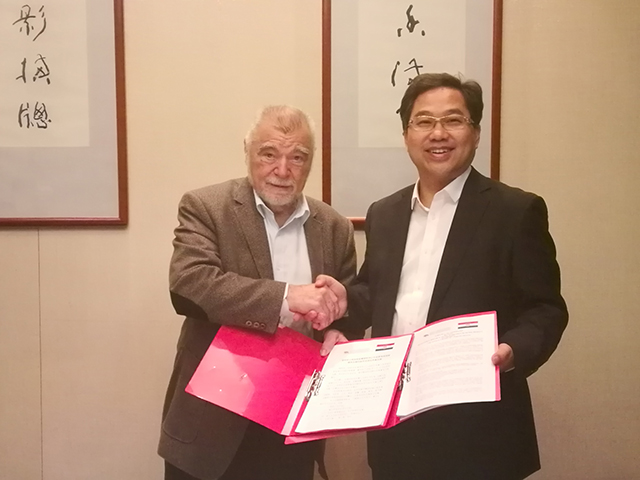
The ceremony: Former President of Croatia H.E. Stjepan Mesić and Dr. Wu Sikang, Director of the Shenzhen Municipal Government's Development Research Center
The two sides are willing to establish long-term cooperative partnership and carry out research on issues such as think tanks, cities and industries, promote humanities exchanges, promote economic and trade cooperation and contribute to the common development of Shenzhen and Hong Kong.
Wu Sikang said that Shenzhen is an important node city along the "Belt and Road" and Croatia is an important country along the "Belt and Road". The cooperation prospects of both sides are bright. Having visited China many times, Mr. Mesic, as an old friend and good friend of the Chinese people, has a better understanding of the situation in various cities in China and hopes that it will continue to promote the in-depth development of bilateral friendly relations with unique influence.
Mesic said that as a window of China's reform and opening up, after 40 years of development, Shenzhen has made great achievements and has become a large-scale modern international city. He expressed the hope that the two countries will take this as an opportunity to further strengthen research, exchange and cooperation in the fields of economy and trade, science and technology, culture, education and the arts.
The signing ceremony was attended by Dr. Jasna Plevnik, Vice President of the Geoeconomic Forum and Huang Hucheng, head of the Center for International Exchanges and Cooperation.
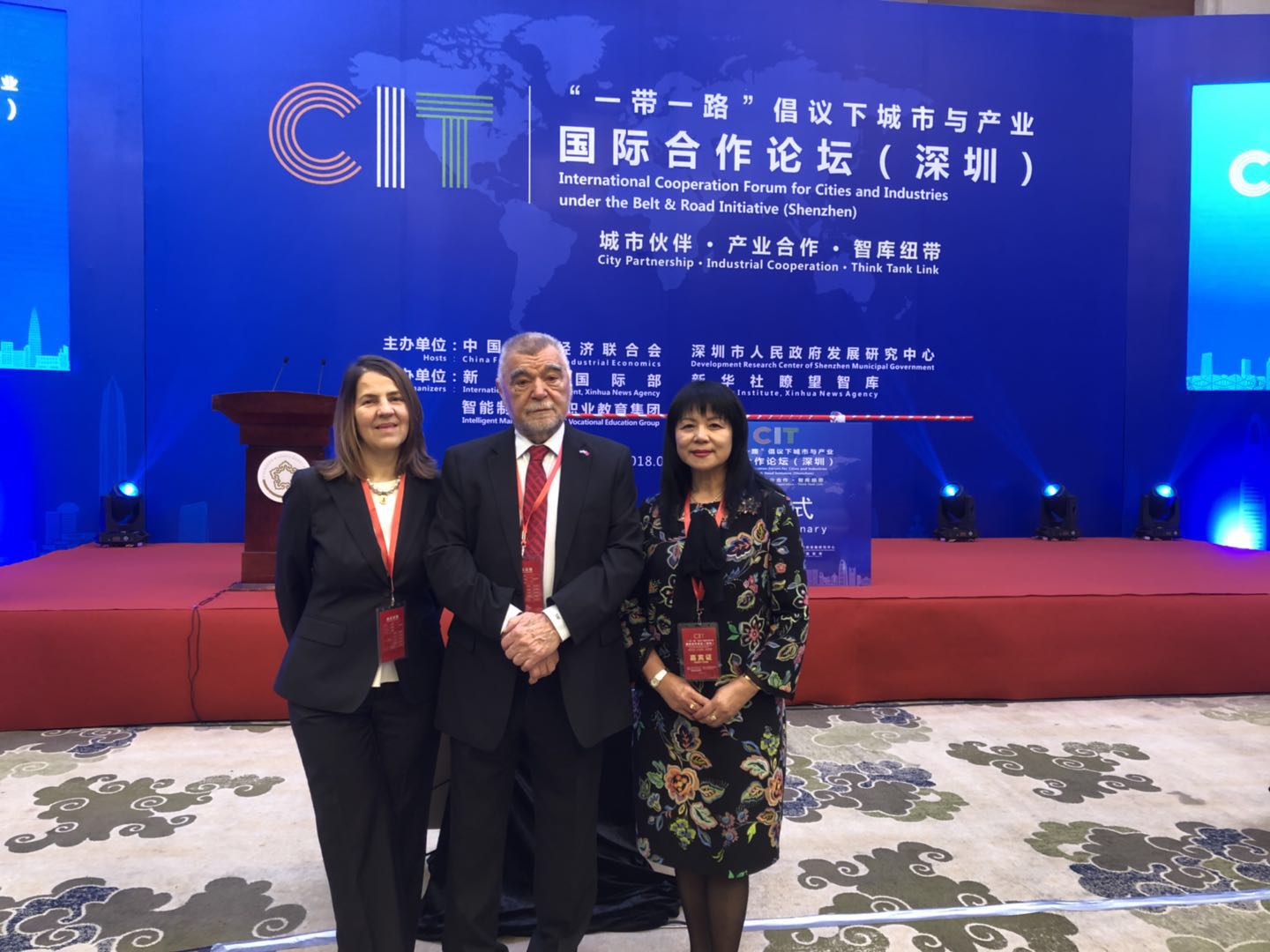
Ms. Liu Pilato Liying (right), a successful entrepreneur in the development of Croatian-Chinese business relations and vice versa, translated President Mesić's speech at the formal opening of the Forum. Ms. Liu Pilato Liying with Former President Stjepan Mesić and Dr. Jasna Plevnik at Shenzhen Forum.
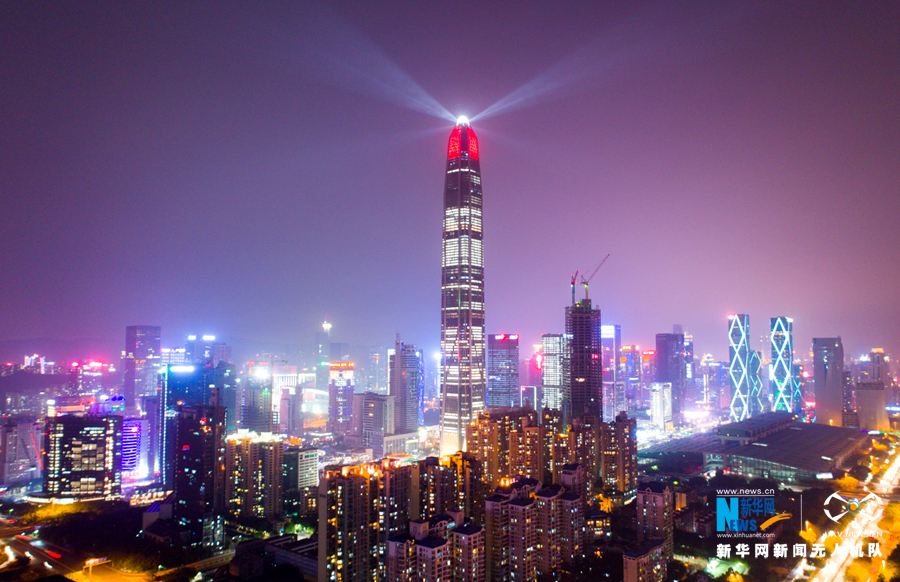
According to McKinsey & Company ranking Shenzhen is the most sustainable city in China because of its excellent performance in the economic, social and environmental segments, especially in the innovation area.
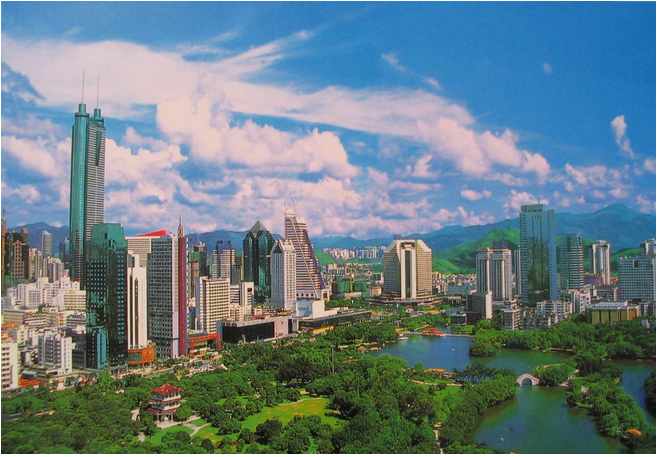
Shenzhen's Lychee Park: The city won many international environmental leadership awards for its greenery and use of green, electric buses in public transportation. It has a long-term goal of reaching a zero emission ecosystem.

The Forum's participants visited Tencent Holdings an investment company that provides Internet and mobile value-added services (VAS),to users in the People's Republic of China, the United States, Europe, and internationally. WeChat a mobile application software is developed by Tencent and has over 1 billion monthly active users.